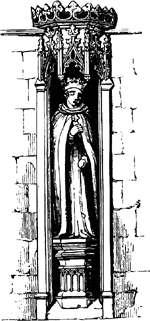image
image
The representation of an object formed from the light or other electromagnetic radiation reflected or transmitted by the object and collected and brought to a focus by a telescope, camera, or similar instrument. Depending on the type of object being observed and telescope involved, images may be viewed directly by the observer, photographed, or recoded or analyzed by other instruments or electronic equipment. In an optical telescope, light is gathered by the primary mirror or objective, which bends the incoming rays until they meet at the focal point where the image is generated. In astronomy, the objects observed are so distant that images formed by all telescopes are upside down and real – that is, the light that produces them actually passes through them, making it possible for them to be projected onto a screen, for example. Such images are magnified by lenses in the eyepiece. In a refractor or Schmidt–Cassegrain, an angled device called a star diagonal, containing a prism or mirror, can be inserted in front of the eyepiece. Apart from making the telescope easier to use by making the eyepiece more accessible, this item of equipment turns the image up the right way but laterally inverts it, swapping it left to right as in a mirror. Radio telescopes work in a similar way to optical instruments, producing images from radio waves and converting them to a visible form by computer processing. See also imagingimage
 See also: Design
See also: Designimage
[′im·ij]image

image
Images are usually taken from the real world via a digital camera, frame grabber, or scanner; or they may be generated by computer, e.g. by ray tracing software.
See also image formats, image processing.
image
(1) (noun) A picture; graphic; photo. See graphics.(2) (verb) To capture a scene (see imaging).
(3) A RAM or storage snapshot (see system image).
| The First Commercial Photographic Method |
|---|
| Daguerreotype film was a highly polished silver surface on a copper plate exposed to iodine fumes to make it light sensitive. Invented by Louis Jacques Daguerre, from the 1840s to the 1850s, daguerroeotype images were a favorite of the rich and famous. |
Image
in philosophy, the result and ideal form of the reflection of an object in human consciousness, arising from practical sociohistorical experience, on the basis and in the form of a system of signs. On the sensory level of knowledge, images consist of sensations, perceptions, and representations. On the level of logical thought, they consist of concepts, judgments, and conclusions.
The objective sources of images are objects and phenomena in the material world. In this sense, an image is secondary in relation to its original. The material substratum of an image consists of the corresponding neurophysiological processes occurring in the human or animal cortex. The material embodiment of an image takes the form of practical acts, language, and various semiotic models. The artistic image is a specific form of image.
The uniqueness of an image lies in its subjective and ideal quality: it has no independent existence outside of its relationship to its material substratum—the brain and the object reflected in the brain. An image is objective in content to the degree to which it faithfully reflects an object. But the image of an object never exhausts the full wealth of its characteristics and relationships: the original is richer than its copy. Once it arises, the image acquires a relatively independent character and plays an active role in human and animal behavior, regulating behavior and actions.
A. G. SPIRKIN